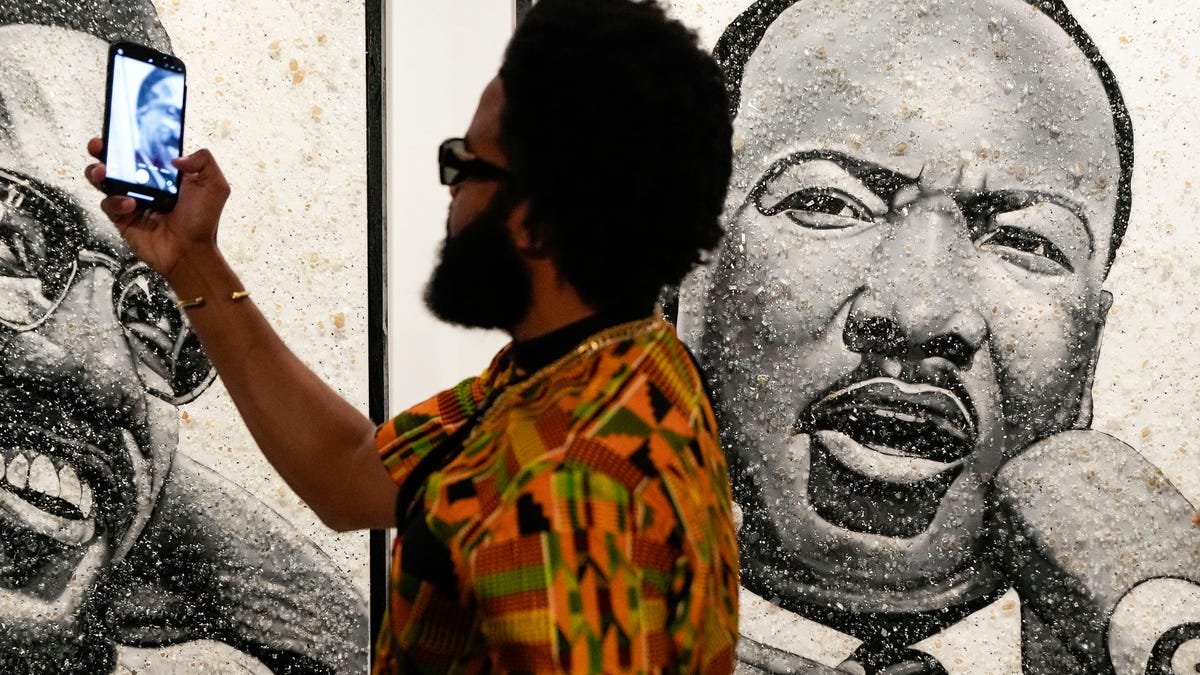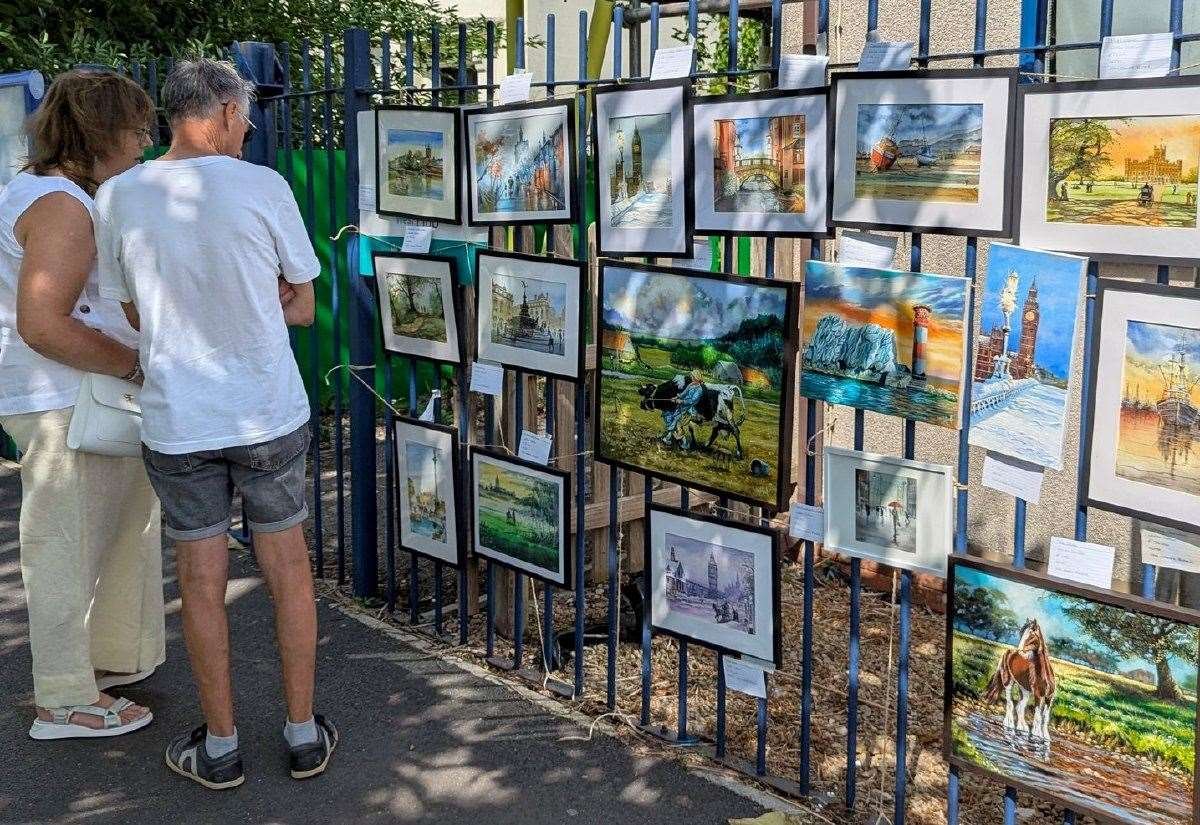Through paintings, photography, film, collage and textile art, Soulscapes aims to reimagine the landscape genre through the lens of artists from the African Diaspora.
The exhibition, at Dulwich Picture Gallery in south London, positions itself as a political critique of Eurocentric traditions but feels more like a contemplation of the relationship between emotion and nature in Black art.
Soulscapes is ambitious in its aims, but its message is watery. The artworks give the impression of being influenced by rather than being a challenge to the traditional conventions of landscape art.
The concept is simplified into the themes of belonging, memory, joy and transformation, with four rooms one corresponding to each, making it palatable but thoroughly uncomplicated. However, the artworks do succeed in evoking the ideals and themes such as intense emotion, the picturesque and the sublime.

The first room is Belonging. It introduces artworks that highlight the connection between self and surroundings and is a thematic precursor to the rest of the exhibition.
It becomes clear that the interpretation of all the rooms relies heavily on the audience’s prior knowledge of the histories of landscape art and colonialism as it does little to explain or contextualise them. This means that some of the substance is lost and leaves you wanting more.
As you move into the Memory room, you are welcomed by Symphonic Variations on an African Air by the British composer Samuel Coleridge-Taylor (b.1875-d.1912).
The music accompanies Body Landscape Memory, a video performance by Harold Offeh, which shows several scenes of Black people at rest in nature. The interpretation seems to want the audience to view this as a decolonial subversion as the figures are described as being “liberated from any racialised notions of victimisation, or suffrage”, posing the idea that to exist in the Black body and be able to rest is radical.

A standout piece is Anthill by Michael Armitage, a painting that uses lubugo bark cloth from mutuba trees as its canvas. Armitage references ancient myths and the spiritual power of nature in this landscape artwork by depicting the Tanzanian legend of witches who fly out of anthills on the backs of hyenas.
The Memory section includes the highlight of the exhibition, a site-specific installation in the mausoleum, titled I Dream of a Home I Cannot Know, by Phoebe Boswell.
With four small wooden stools in front of it, the film plays within the central arch, creating a perspective of looking through a window on a picturesque scene of an East African beach.
A montage shows crashing waves, boats sailing, children playing, people working and at rest playing on a loop. The film is paired with the soundscape, titled I Want to Invite You to Breathe With Me, of people breathing collectively that creates a tranquil guided-meditation feel, bringing a stillness to the centre of the exhibition.
With Joy, Soulscapes tries to be more expansive than its conceptual framework and physical constraints can handle. The theme is rather prescriptive, some of the paintings are too on the nose and the yellow background feels cliched.

It would have helped if the gallery was bigger. The room feels cramped, which means that the artworks, some of which are quite large, are difficult to absorb at an appropriate distance.
Hanging the artworks at different heights would be an effective method of solving this as some of the paintings would benefit from being higher on the wall.
For example, Alain Joséphone’s Untitled 131, from the ‘Regal’ Series, which would give it room to breathe and would also re-imbue the essence of the artist’s memory of being a child and looking up at the canopy of trees that it shows.
The exhibition ends on a high with the Transformation room. At the centre is Another Rest in Peace – From a Holy Land in Which We Came by Michaela Yearwood-Dan, a painting commissioned specifically for the exhibition.
It is an abstract and sublime evocation of how the colours of the sky change throughout the day. The canvas is vast and almost overwhelming, but it encourages closer inspection to search for the handwritten notes that are whispered throughout the composition like secrets.

The drippy quality of Yearwood-Dan’s paint is echoed by Ravelle Pillay’s There is Water at the Bottom of the Ocean. However, rather than a jubilation, this morose paintingof a tropical shoreline has a tear-streaked quality tinged with the sadness of the painful legacies of colonialism.
Overall, Soulscapes is an enjoyable exploration of the connection between nature and emotion through the perspective of the African diaspora. It is aesthetically pleasing and provides an alternative perspective but does little to subvert the traditional conventions of the landscape genre.
It also falls short of its political ambitions as its loose grasp and tenuous translation of colonialisation, a concept it hinges on, needs to be pushed further to find the equilibrium between both informing and challenging the audience.
Vanessa Otim is cataloguer for the Turner Bequest at Tate and a Collections Assistant at the University of Exeter
Project data
Patina Art Collection Care
Melanie Mues, Mues Design London






